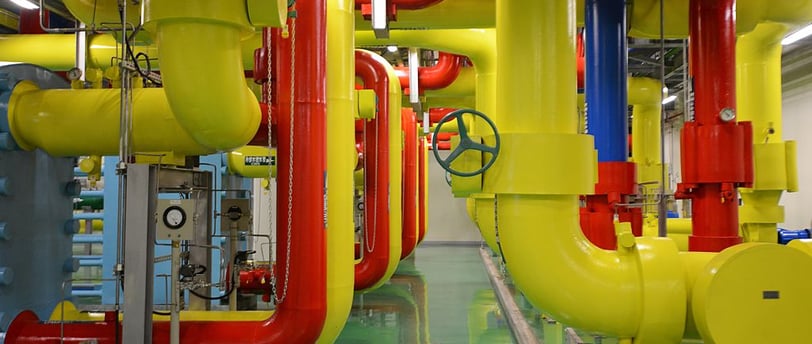Data Center Plumbing: A Guide to Cooling, Efficiency, and Sustainability
2 min read


When you hear the term “data center plumbing,” you might first think of networking cables, servers, and other digital infrastructure that keep data centers running. But in another sense, data center plumbing refers to the actual pipes and fluid systems that are just as essential to keeping operations smooth.
While these plumbing systems often go unnoticed, they play a critical role in cooling, safety, and overall efficiency. A well-designed and maintained plumbing system is just as vital as the IT hardware itself.
In this guide, we’ll break down the role of data center plumbing, the unique challenges it presents, and strategies to ensure reliability and performance.
Why Do Data Centers Need Plumbing?
At first glance, you might assume that a data center—primarily filled with servers and IT equipment—wouldn’t require much plumbing beyond a small restroom for on-site technicians. But in reality, plumbing is a key component of data center infrastructure.
Key Uses of Plumbing in Data Centers:
• Cooling Systems: Many data centers use liquid cooling, which requires a network of pipes to circulate chilled water or other cooling fluids. Even those using traditional air cooling rely on pipes to drain condensation from air conditioning units.
• Fire Suppression: Unlike standard buildings, data centers often use specialized gas-based fire suppression systems (like FM-200) to protect sensitive IT equipment from water damage. These gases are distributed through dedicated piping.
Unlike typical buildings, data centers have unique plumbing challenges that require specialized solutions.
Top Plumbing Challenges in Data Centers:
• Leak Prevention & Pipe Reliability: A single leak could cause catastrophic damage to IT equipment. Even a clogged pipe can disrupt cooling systems, leading to overheating and potential downtime.
• Condensation Control: When pipe temperatures differ from the surrounding air, condensation can form, leading to unwanted drips or water pooling near critical electronics.
• Electrical Safety: If pipes conduct electricity—either from direct contact or static buildup—they could discharge into servers or networking equipment, causing damage.
• Handling Specialized Materials: Some data center plumbing isn’t just for water—it may carry dielectric fluids for cooling or fire suppression gases.
Choosing the Right Pipes for a Data Center
Not all plumbing materials are created equal—especially when it comes to mission-critical environments like data centers.
Pipe Materials: Pros & Cons
Copper & Metal Pipes:
· Rarely used in data centers due to condensation risks, potential blockages, and their ability to conduct electricity.
Plastic Pipes (CPVC, PEX, HDPE, PP):
• CPVC (Chlorinated Polyvinyl Chloride) is common in buildings but relies on glued connections, which can weaken over time.
• PEX (Cross-linked Polyethylene) is a popular choice for water-based cooling. It’s corrosion-resistant and uses mechanical connections that are more reliable than glue. However, it’s not ideal for high-pressure systems and can be easily cut, posing a security risk.
• HDPE (High-Density Polyethylene) & PP (Polypropylene) are stronger alternatives to PEX, making them a preferred choice for data centers where plumbing reliability is critical.
Data center plumbing may not always be in the spotlight, but it’s just as important as the servers and networking hardware. Choosing the right materials, designing an efficient system, and ensuring ongoing maintenance are essential steps to optimizing cooling, safety, and long-term reliability.
By addressing the unique challenges of data center plumbing, organizations can minimize risk, reduce downtime, and improve overall efficiency—ensuring their facilities run smoothly and securely.
Get in touch with us
Let's find perfect real estate for your data center in Florida.
Northern & Central Florida
Jacksonville - orlando - tampa
andrey@datacenteragent.com
331-399-2365
© 2024. All rights reserved.
